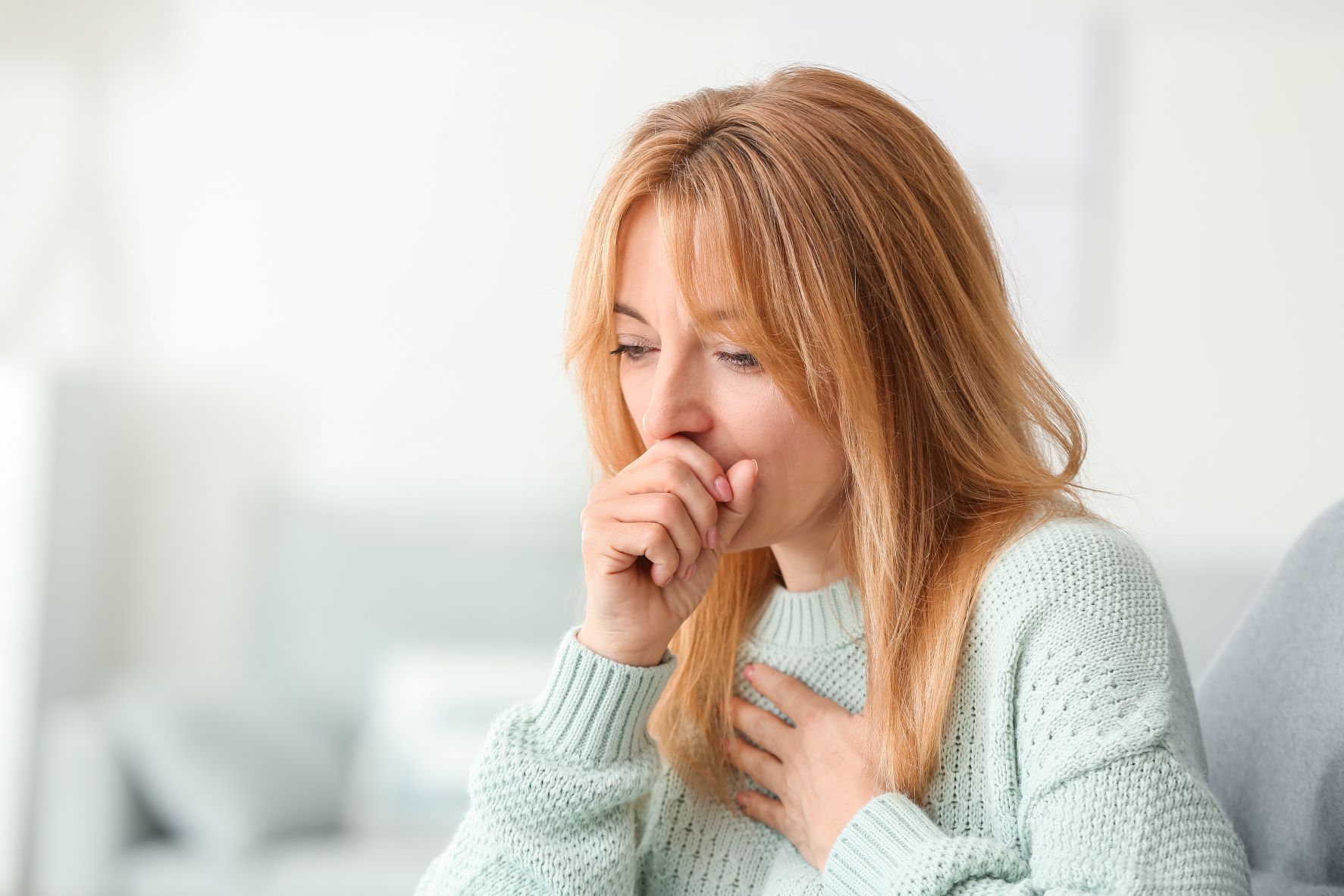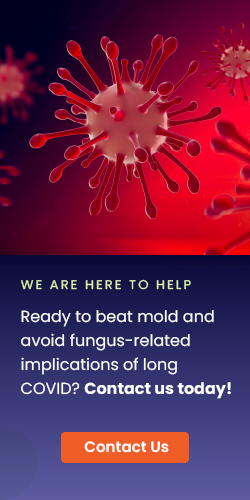No one likes to get sick, but COVID can be much more serious than your standard flu. From fever and chills to muscle and body aches, this virus is not easy to deal with. Not to mention the nausea, vomiting, and loss of taste and smell that it causes! Unfortunately, COVID doesn’t stop there. In some cases, people who have been infected with the virus experience long-term effects, known as long COVID or post-COVID conditions (PCC).
While long COVID causes a slew of unpleasant and even dangerous symptoms, the hardship doesn’t end there. COVID and long COVID can make you even more susceptible to indoor pollutants, like mold, leading to further deterioration in your health. If you have COVID or PCC, getting indoor air quality testing can give you the best opportunity for healing. Here’s what you need to know.
What is Long COVID?
Most people recover within a few days to a few weeks after being infected with COVID. However, some people do not. Long COVID can occur when someone hasn’t gotten better after four weeks. Anyone can experience this condition, but some people notice its symptoms while they have the initial COVID infection. For others, the symptoms come on later.
While there’s no test for post-COVID conditions, there is a list of symptoms. It’s worth noting that it can affect people in different ways and for different periods of time. However, people generally report fatigue or tiredness that’s severe enough to impact their daily life. Their symptoms also worsen after they mentally or physically exert themselves.
People also report:
- Fever and cough
- Chest pain
- Shortness of breath
- Difficulty breathing
- Pounding heart
- Brain fog or difficulty concentrating
- Headache
- Changes in smell or taste
- Dizziness upon standing
- Sleep issues
- Pins-and-needles sensations
- Depression or anxiety
- Joint and muscle pain
- Stomach pain
- Diarrhea
- Rash
- Changes in the menstrual cycle
Parallels Between Long COVID and Poor Indoor Air Quality
Interestingly, the symptoms of long COVID and poor indoor air quality are similar. If you live or work in a space with poor indoor air quality (IAQ), you might experience:
- Headaches
- Fatigue
- Eye and nose irritation
- Discomfort in the throat and lungs
- Trouble concentrating
- Worsened asthma
If you’re experiencing symptoms like headaches, fatigue, and brain fog, and you previously have COVID, it could be difficult to determine whether you’re facing poor IAQ or long COVID. You may even be dealing with both issues. If you are experiencing both, your symptoms may also be more extreme.
How Does COVID Interact with Mold?
Similar symptoms aside, there’s also strong evidence that suggests that people with COVID are more susceptible to fungal infections from mold. In fact, we’ve experienced multiple surges and various types of infections.
The first noteworthy wave occurred in India. In mid-2021, India was dealing with a surge of COVID cases. In the midst of this, 30,000 people also became infected with mucormycosis. Also known as black fungus, this illness is the result of the mold and fungus Mucor. Mucormycosis is a serious illness with a mortality rate between 46% and 96%.
Although the condition is normally considered rare, it became widespread in people with COVID. This is likely because people who are most at risk are those with compromised immune systems – just like people with COVID or long COVID. Worse still, the risk of mucormycosis increases for people being treated with chemotherapy or steroid drugs. Since steroids are used to treat COVID, this could be part of the reason for the spike in cases.
We’ve also seen an increase in cases of aspergillosis. This is a fungal infection caused by aspergillus, which is a common mold found in buildings. Aspergillus is everywhere, so it’s unavoidable. You likely breathe in hundreds or even thousands of spores each day. Normally, these spores won’t harm you because you have a strong immune system. However, it poses a special risk to people who are immunocompromised. It is considered a serious threat for people undergoing bone marrow transplants and cancer treatments, and we now know that people with COVID are also under attack.
This is not necessarily a new issue. In fact, we saw a spike in aspergillosis cases in 2009. These cases were a direct result of the pandemic strain of H1N1 – an influenza virus. Of the cases on record from 1963 to 2016, about half died.
People with COVID are more likely to develop opportunistic infections. Just as the name implies, these are infections that result because of the opportune situation in which your immune system is weakened as it fights off another significant infection. Opportunistic infections are often caused by bacteria and fungi, which can be directly related to poor indoor air quality.
Other common fungal infections that may take advantage of a COVID-weakened immune system include:
- Histoplasmosis: Caused by mold and fungus called histoplasma, which is common in central and eastern U.S.
- Candidiasis: Caused by Candida, a yeast which is a type of fungus.
What Can You Do About Indoor Pollutants and Mold?
The symptoms of fungal infections and COVID are similar. This includes fever, shortness of breath, and cough. It is possible to have both at the same time, so it’s important to get tested to ensure you receive proper treatment. Though there’s no test for long COVID, you can test for active COVID infections, as well as fungal infections.
Aside from immediate testing for present conditions, it’s important to protect yourself by getting indoor air quality testing. People spend 90% of their time, on average, indoors. If your home or workplace has mold, it can strongly impact the air quality you’re breathing in almost 100% of the time. If the air quality doesn’t improve, you can become sick. Years of exposure can even lead to more serious health conditions, including cancer.
If you have COVID or long COVID, exposure to fungus and mold can be more immediately dangerous. With a weakened immune system, your body may struggle to fight off the mold spores you encounter. The implications of these infections are serious and potentially life- threatening.
Here’s the good news: you can get unbiased indoor air quality testing. Indoor Doctor uses state- of-the-art equipment to test homes and offices. We then provide you with a full report and consultation to ensure all of your questions are answered. We offer recommendations, but aren’t trying to sell you a solution. We simply ensure you understand the facts and have an action plan to improve your air quality.
Ready to beat mold and avoid fungus-related implications of long COVID? Contact us today!
Resources:
- Long COVID or Post-COVID Conditions – CDC.gov
- Aspergillosis infection of particular concern – Healthline.com
- COVID-19 and Fungi: A Nightmare in the Making – Public Health
- Common fungus emerges as threat to hospitalized COVID-19 patients – Science.org
- The Truth About COVID-19 and Black Fungus
- Fungal Diseases and COVID-19 – Pfizer
- Indoor Air Quality – OSHA.gov






